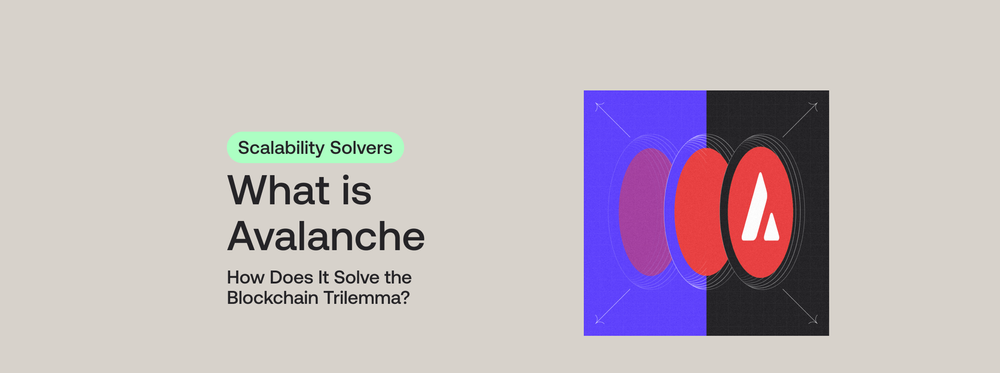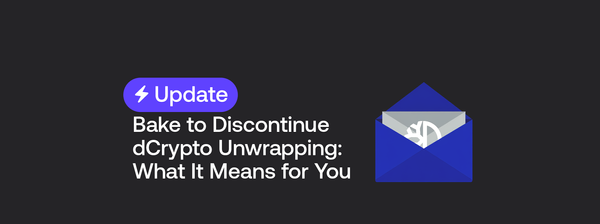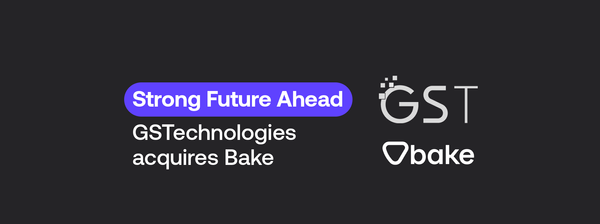What is Avalanche (AVAX), and How Does It Solve the Blockchain Trilemma?
Blockchain technology has revolutionized the world of finance. Having started as a simple store of value with Bitcoin, it has since evolved to enable the creation of decentralized applications (dApps), tokenized assets, and an evergrowing suite of innovative decentralized tools and services.
However, as the use cases for blockchain grew, so too did the challenges. In order to facilitate transactions, enforce rules, and provide services without intermediaries, blockchain developers had to grapple with a trade-off between scalability, security, and decentralization.
This trade-off is known as the blockchain trilemma. Achieving the three desired traits of high performance, robust protection, and distributed governance at the same time on a blockchain network is considered to be almost impossible. Improving one aspect almost always means sacrificing another, resulting in suboptimal solutions.
But will there ever be a way to overcome this trilemma and create a platform that can offer fast, cheap, secure, and truly decentralized dApps?
This is the question that Avalanche aims to answer. In this article, we will explore what Avalanche is, how it works, and how it may just be the answer to solving the blockchain trilemma.
What is the Blockchain Trilemma?
Before exploring what Avalanche is, it is essential to understand what the blockchain trilemma is. As mentioned, it refers to blockchain technology’s conundrum of balancing scalability, security, and decentralization.
To illustrate, let’s first consider Bitcoin. Non-Turing complete by design, Bitcoin is fundamentally secure due to its limited functionality. However, this security comes at the cost of scalability and decentralization.
Bitcoin utilizes the proof of work (PoW) consensus mechanism to secure its network, a process that consumes vast amounts of energy and limits the network’s throughput. PoW also tends to favor centralization, with just two large mining pools (Foundry and Antpool) able to afford the hardware and electricity costs. Together, these mining pools monopolize 51% of the global hash rate.
Conversely, Ethereum is Turing complete. Its support for smart contracts enables you to use smart contracts to build a wide range of decentralized applications (dApps).
Furthermore, Ethereum utilizes the proof of stake (PoS) consensus mechanism, where you must lock up a certain amount of tokens to participate in the validation process. Combined with its deep functionality, Ethereum is highly scalable and relatively cheaper to participate in.
Ethereum’s use of smart contracts also makes it inherently decentralized, as these self-executing agreements replace third-party intermediaries to approve transactions.
This makes Ethereum both scalable and decentralized. The drawback? Security.
PoS, while more streamlined than PoW, opens validators to the risk of losing their staked tokens due to malicious behavior or network failures.
What is Avalanche?
Avalanche is a smart contract-enabled platform that aims to solve the blockchain trilemma by being the fastest, most scalable, and most secure blockchain network in the world.
Instead of being a single blockchain, Avalanche is a network of multiple independent yet interoperable blockchains. These blockchains are called Subnetworks, each one operating on different systems of rules, validators, and applications.
Also known as Subnets, subnetworks may also be augmented with the ability to communicate with external blockchains like Bitcoin and Ethereum via cross-chain bridges.
Avalanche has a core Subnet called the Primary Network, which runs three blockchains:
- X-Chain: The Exchange Chain is where you create and trade digital smart assets called Avalanche Native Tokens, which encompass tokens, stablecoins, and non-fungible tokens (NFTs).
- C-Chain: The Contract Chain is compatible with the Ethereum Virtual Machine (EVM), supporting the deployment and execution of smart contracts written in Solidity.
- P-Chain: The Platform Chain is the hub for all validator and Subnet-level operations. This is where you create new blockchains and Subnets, add validators to Subnets, stake operations, and perform other platform-level operations.
Avalanche has its own native cryptocurrency called AVAX, which is used to pay transaction fees, participate in network governance, and secure the network through staking. AVAX has a fixed supply of 720 million tokens.
In order to become a validator for the Primary Network, you must stake at least 2,000 AVAX before validating and securing the X-Chain, C-Chain, and P-Chain.
History of Avalanche
In 2018, a team of researchers — called Team Rocket — from Cornell University published a paper titled “Snowflake to Avalanche: A Novel Metastable Consensus Protocol Family for Cryptocurrencies.”
The paper proposed a new family of consensus protocols that could achieve high scalability, security, and decentralization without relying on Proof of Work (PoW) or Proof of Stake (PoS).
Soon after, the authors founded Ava Labs to build the Avalanche platform. Ava Labs was originally led by Emin Gün Sirer, a professor of computer science at Cornell University and a prominent figure in the blockchain space. He was later joined by Kevin Sekniqi and Maofan “Ted” Yin, both Ph.D. students at Cornell University and co-authors of the paper.
In September 2020, Ava Labs launched the Avalanche platform after raising $42 million in the public sale of AVAX.
It was originally designed to be a highly customizable and interoperable network of blockchains that could support any kind of application, from decentralized finance (DeFi) to gaming and social media.
Avalanche was also designed to be compatible with Ethereum via its C-Chain, reducing barriers to entry for new users.
Since its launch, Avalanche has garnered significant support from investors, developers, and users alike. Its ecosystem has experienced momentous growth, with over 300 projects building on its network — these include decentralized exchanges (DEX), lending platforms, stablecoins, and NFT marketplaces.
How Does Avalanche Solve the Blockchain Trilemma?
To solve the blockchain trilemma, Avalanche deploys a unique consensus mechanism that combines the best features of PoW and PoS. Named Avalanche Consensus, this consensus mechanism is based on an approach called metastability, which enables the network to attain a high degree of validator agreement without needing absolute finality.
Under the Avalanche Consensus, each validator takes charge of a small set of peers. At random intervals, the validator samples and queries its peers about their preferred state of the network. Based on the responses, the validator updates its own state and repeats the process until it converges with the majority of the network.
This enables the network to efficiently achieve consensus on the validity of transactions and blocks without an intermediary.
Compared to traditional consensus mechanisms, the Avalanche Consensus is highly scalable and can process up to 4,500 transactions per second (TPS) with low latency and minimal fees. Ethereum today (Jan 2024) is approximately 14 TPS.
The Avalanche Consensus is also highly secure, capable of withstanding attacks from up to 51% of malicious validators, as long as they are not coordinated.
Finally, the Avalanche Consensus achieves true decentralization by allowing anyone to join the network as a validator with a minimum stake of 2,000 AVAX.
To further encourage good validator behavior, the Avalanche Consensus uses two additional scaling mechanisms: Proof of Uptime and Proof of Correctness.
Proof of Uptime rewards validators for being online and responsive, presenting them with uptime certificates that prove their active participation in the consensus process.
The Proof of Correctness mechanism scales validator rewards based on the historical accuracy of a node.
With Proof of Uptime and Proof of Correctness, validators are incentivized to maintain a high level of availability and performance, which benefits the security and reliability of the network.
Why Should You Invest in Avalanche?
Avalanche is crucial for developers and users who want to build and use dApps on a fast, scalable, and secure blockchain platform.
Here are the key reasons why you should invest in Avalanche:
Avalanche is Scalable.
Avalanche can handle over 4,500 transactions per second on the C-Chain, and over 10,000 transactions per second on the X-Chain, with an average confirmation time of less than 3 seconds.
This makes it suitable for applications that require high throughput and low latency, such as decentralized exchanges, gaming, and social media.
Avalanche Charges Low Transaction Fees.
Avalanche charges minimal fees for transactions and smart contracts. The fees are dynamic and depend on the network congestion and the complexity of the operation.
These fees are typically much lower than those on Ethereum, which can range from a few cents to hundreds of dollars.
Avalanche is Highly Secure.
Avalanche provides a robust level of security for its network and subnetworks, as it can resist attacks from up to 51% of malicious validators.
It allows validators to choose their own security threshold, letting them decide how many confirmations they need to trust a transaction or a block. This gives validators more flexibility and control over their transactions.
Avalanche is Truly Decentralized.
Avalanche supports a large and diverse set of validators who can join the network with a minimum stake of 2,000 AVAX.
Currently, there are over 1,650 validators on the Avalanche network, with a total of over 260 million AVAX staked. This ensures the network is not dominated by a few powerful entities, with the governance distributed and democratic.
Avalanche is Interoperable.
Avalanche enables cross-chain communication and transfers of assets and data between its Subnets and external blockchains. You can easily move your assets from Ethereum to Avalanche and vice versa, using bridges such as the Avalanche Bridge and the ChainBridge.
You can also create and trade assets from other blockchains, such as Bitcoin, on the Avalanche network, using wrapped tokens such as WBTC and renBTC.
Upscale Blockchain Technology With Avalanche
Avalanche demonstrates the possibility of building a well-rounded blockchain network that does not make any sacrifices.
Get started by buying your first AVAX via Bake. AVAX is available as part of the Scalability Solvers Smart Bundle along with NEAR, allowing you to build your position in this space easily.

DISCLAIMER: Please note that the information on this blog and in any articles posted on this blog is for general information only and should not be relied upon as financial advice. Cake Pte. Ltd., Bake, UAB, and its affiliates (the “Cake Group”) are not licensed financial advisers. You may wish to approach your own independent financial advisor before making any decision to buy, sell or hold any product and/or digital assets mentioned in this blog.




